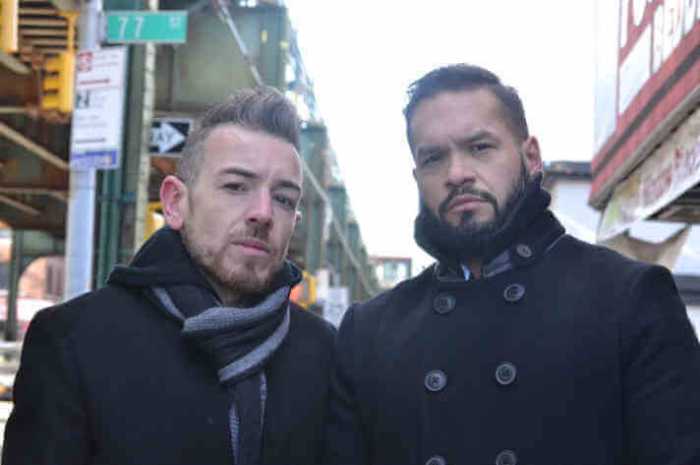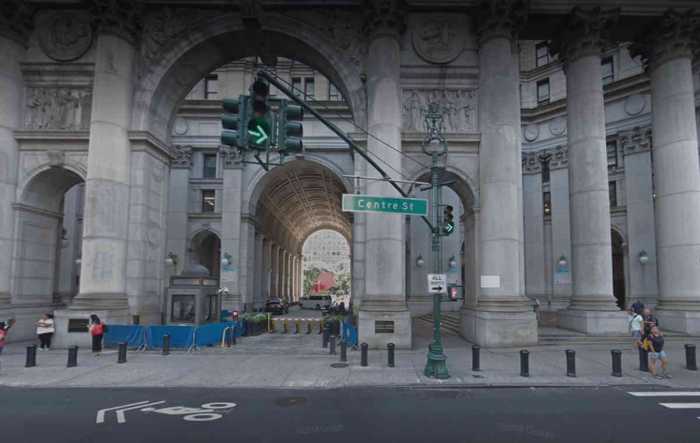Hetrick-Martin Institute (HMI), the nation’s oldest social service agency for lesbian, gay, bisexual, transgender, and questioning (LGBTQ) youth, this week announced an ambitious, City Council-funded initiative to provide mental health and support services in all five boroughs.
The November 9 announcement coincided with HMI’s release of a new report, “Living at the Intersection: LGBTQ Youth of Color in New York City,” which documents the urgent and multiple needs of these youth: homelessness, hunger, sexual abuse and other violence, family rejection, and social marginalization because of their sexual orientation, gender expression, and race.
“This City Council is proud to support LGBTQ youth with this new initiative,” said Council Speaker Melissa Mark-Viverito. “By providing health services that address the unique needs of LGBTQ youth, we are making a true difference in the lives of young New Yorkers who have often been neglected by the healthcare system in the past.”
Partnering with community groups in all five boroughs, City Council-funded program targeting vulnerable populations
The City Council has allocated $1,000,000 to the initiative, on top of nearly $250,000 in other grant funding to HMI in the current fiscal year.
The funding, which will be administered by the New York City Department of Health and Mental Hygiene (DOHMH), will enable the Astor Place-based HMI to expand services to LGBTQ youth and their families through partnerships with government and community-based organizations throughout New York City. The initiative will focus primarily on youth of color, homeless youths, immigrants, and those involved with the criminal justice system.
The initiative comprises six components that expand current services and provide new ones. They include hiring a staff psychiatrist at HMI, whose services will be available to all partner agencies; expanded Saturday hours and services at HMI (mental health screening and assessment, and referrals to counseling, HIV testing, legal aid, and meals); training staff members of community-based organizations to support and care for youths with mental health challenges; family counseling and street outreach services; and working with city agencies (Education, Probation, Youth and Family Justice, Administration for Children’s Services) to ensure that they have the skills to serve LGBTQ youth among their client populations.
HMI also will hold a series of “LGBTQ youth summits” throughout the city to connect youths with service agencies and to develop strategies and programs to “effect change for the young people who need it the most.” The first summit will be held November 21 at St. Francis College in Manhattan.
Dr. Emery Hetrick, a psychiatrist, and his partner, Dr. Damien Martin, a professor at New York University, founded Hetrick-Martin Institute in 1979. Shocked by the story of a 15-year-old homeless youth who had been beaten and thrown out of a shelter because he was gay, Hetrick and Martin convened a group of adults who created the Institute for the Protection of Lesbian and Gay Youth (IPLGY). In 1988, the Institute was re-named to honor its founders. In its early years, the organization prioritized education, creating the Harvey Milk High School to provide a safe learning environment for youths victimized in public schools because of their sexual orientation or gender expression.
Today, HMI is the nation’s largest agency serving LGBTQ youth, with a dual focus on providing services and shaping policy. In 2013, HMI created a Center for LGBTQ Youth Advocacy and Capacity Building; a year later, it established a new organization in Newark, New Jersey, to provide mental health and after-school services and to train staff at community-based organizations and government agencies.
In the report, “Living at the Intersection: LGBTQ Youth of Color in New York City,” Thomas Krever, HMI’s chief executive officer, makes a case for the initiative’s network approach to delivering comprehensive services to LGBTQ youth, who, he says, “do not live within the isolation of any one organization… Their lives intersect with the broader systems and institutions that make up our society –– government, educational, health, community-based organizations, and so on.”
HMI annually serves more than 2,000 young people, ninety percent of them youth of color. According to the report, more than 80 percent live at or below the federal poverty level. Eighty percent identify as gay, lesbian, or bisexual; six percent identify as transgender females and one percent as transgender males. (Only one percent identifies as “questioning”; 15 percent say they are heterosexual.) Youths who come to HMI struggle with mental illness (36 percent have attempted suicide at least once, more than a quarter suffer from depression, and nearly 20 percent have been hospitalized for psychiatric conditions) and homelessness (more than half have “experienced at least one housing crisis”). HMI’s youth also have HIV infection rates three times higher than the national average.
These disturbing statistics take on flesh and blood through the stories of five young people profiled in the HMI report. The conservative religious parents of Chase, a 20-year-old African-American gay male, kicked him out of the house after he came home late one night to find the front door chained. His mother said only, “Throw the key in and get out.” Jessica, a 19-year-old multiracial trans female, has been “couch surfing” in different places since her mother threw her out of the house. Eddie, 17, her African-American gay friend, lives at home but in a hostile, homophobic environment. Though Jessica and Eddie have experienced family rejection, they found support and acceptance from their peers and the professionals at HMI. Denise, 22, a self-described queer woman of color, became homeless after she was raped. Lewis, 22, a multiracial transgender male, was verbally harassed and bullied in school and on the streets. His mental health problems were exacerbated when he dropped out of school and became homeless.
Despite the recent advances in LGBT rights, including the Supreme Court’s historic ruling in favor of marriage equality, many of the community’s more vulnerable members experience serious, even life-threatening crises that affect their physical and mental health — poverty and homelessness, stigma, rejection, and violence. Hetrick-Martin Institute’s new LGBTQ youth initiative is a pioneering agency’s vision of change, and a plan for how to achieve it.
At the event announcing the initiative, HMI CEO Krever thanked City Councilmember Carlos Menchaca for “spearheading” the project and acknowledged “the support and commitment” of the Council’s LGBT Caucus. Menchaca, the first out gay Council member from Brooklyn, praised HMI for its “transformative” approach to serving LGBTQ youth.
“Every day, we are more and more aware that we must address our community’s issues as a whole — with wraparound services that are focused on our entire personhood,” Menchaca said. “This initiative will help us to do that more effectively. I am proud to be part of this groundbreaking project.”
For more information about Hetrick-Martin Institute’s LGBTQ Youth of Color initiative, including the November 21 youth summit, visit hmi.org.





































